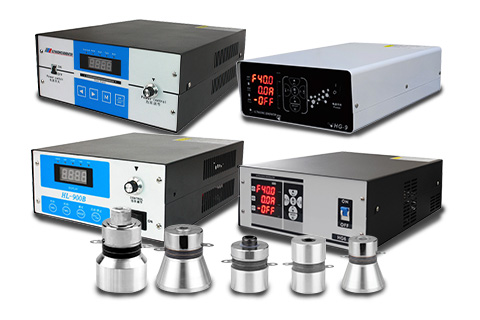Introduction
Ultrasonic technology is revolutionizing the way industries handle deep, non-invasive cleaning. At the core of this transformation lies the ultrasonic transducer—a precision device responsible for converting electrical signals into high-frequency sound waves. From medical device sterilization to automotive degreasing, understanding the mechanics and maintenance of ultrasonic transducers is essential for maximizing cleaning efficiency and prolonging equipment life. This in-depth guide explores various types, applications, and maintenance tips for ultrasonic transducers.
What Is an Ultrasonic Transducer?
An ultrasonic transducer is a specialized component that converts electrical energy into ultrasonic sound waves, typically in the 20kHz to 80kHz range. These high-frequency sound waves generate rapid pressure changes in a liquid medium, producing microscopic vacuum bubbles—a phenomenon known as cavitation. When these bubbles collapse, they release energy capable of removing contaminants like grease, dust, and oxide layers from intricate surfaces.
Typically mounted to the base or side of an ultrasonic cleaning tank, transducers work in tandem with a generator that supplies alternating current. The synchronized vibrations of the transducer produce consistent acoustic energy across the tank, ensuring thorough cleaning of both visible and hard-to-reach areas. These components are critical for precision cleaning tasks, especially in sectors that demand high standards of hygiene and quality control.
Types of Ultrasonic Transducers
1. Piezoelectric Transducers (Ceramic Type)
Most widely used in commercial and industrial ultrasonic cleaners.
Utilize piezoelectric ceramics like PZT (lead zirconate titanate) that deform when voltage is applied.
Offer precise frequency control, energy efficiency, and reliable performance.
Ideal for delicate cleaning such as surgical instruments and PCBs.
2. Magnetostrictive Transducers
Use nickel-based magnetic materials that change shape under magnetic fields.
Extremely durable and chemically resistant.
Common in harsh industrial environments such as automotive or aerospace cleaning.
3. Immersible Ultrasonic Transducers
Modular, stainless steel transducer units that can be placed in existing tanks.
Perfect for system upgrades and adaptable cleaning setups.
Easily repositioned without modifying original tank design.
4. Bolt-Clamped Langevin Transducers
Composed of multiple ceramic discs clamped together with a bolt.
High acoustic output and prolonged durability.
Ideal for continuous-use, high-power industrial ultrasonic systems.
Applications of Ultrasonic Transducers
Ultrasonic transducers are versatile and applicable in numerous industries:
Automotive: Cleaning carburetors, pistons, and fuel injectors.
Medical & Dental: Sterilizing surgical tools and dental instruments.
Electronics: Removing solder flux, dust, and micro-debris from circuit boards.
Jewelry: Safe cleaning of gemstones, metals, and intricate designs.
Aerospace & Defense: Precision cleaning of sensitive components.
Industrial Manufacturing: Pre-treatment and degreasing of mechanical parts.
Choosing the Right Ultrasonic Transducer
Consider these factors to ensure optimal performance:
Frequency Range
20–40kHz: Best for heavy-duty tasks like engine parts.
60–100kHz: Ideal for fine cleaning of electronics or optics.
Tank Size Compatibility
Ensure proper matching for even energy distribution.
Power Output
15–25 watts per liter is standard. Choose higher wattage for tougher contaminants.
Chemical Resistance
Select materials compatible with your cleaning solutions (acid, solvent, etc.).
Installation Type
Choose between bonded, immersible, or bolt-on types based on new setups or retrofits.
Ultrasonic Transducer Maintenance Tips
Inspect Bonding Areas Regularly
Look for cracks, corrosion, or signs of detachment.Avoid Dry Running
Always ensure liquid is present before activation.Clean Surfaces Routinely
Residue reduces efficiency—clean the tank weekly if used often.Monitor Temperature
Overheating may indicate imbalance or component failure.Check for Acoustic Irregularities
A change in cavitation sound often signals damage or wear.
Frequently Asked Questions (FAQ)
Q1: How long does an ultrasonic transducer typically last?
5–10 years with proper use and maintenance.
Q2: Can users replace broken transducers themselves?
Only plug-in immersible types. Built-in units should be serviced by professionals.
Q3: What frequency is best for general cleaning?
28kHz to 40kHz for a balance of power and safety.
Q4: Are immersible transducers as effective as built-in ones?
Yes, when correctly installed and tuned.
Q5: What causes transducer failure?
Dry operation, overheating, physical shock, or chemical corrosion.
Conclusion & Call-to-Action
Ultrasonic transducers are the heart of any ultrasonic cleaning system. Selecting the right type and maintaining it properly ensures consistent, high-quality results and minimal downtime.
🔍 Looking for reliable ultrasonic transducers or complete ultrasonic cleaning systems?
👉 [Explore our product line now]
👉 [Contact us for tailored solutions]
